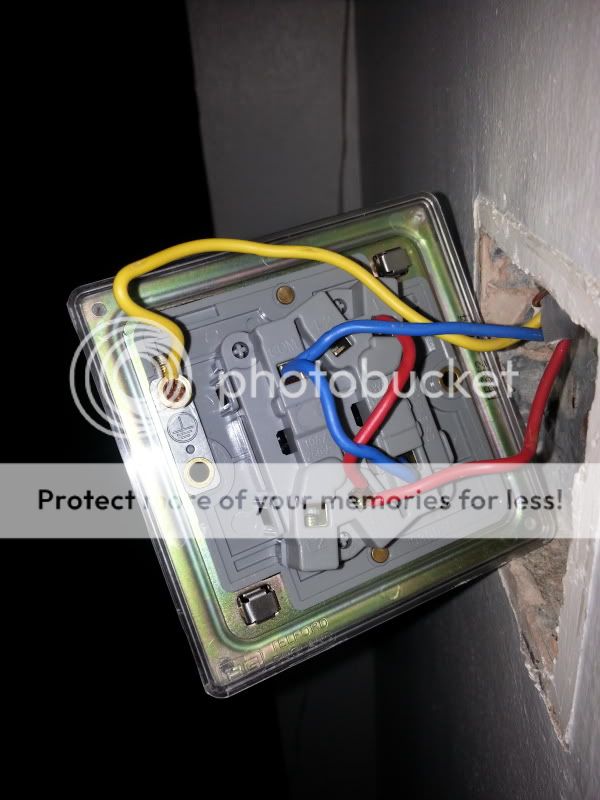Hi,
I started what I though would be a simple job of replacing a two switch light switch with another newer nice lovely chrome two switch light switch.
Each switch controls a different light - no communication between them needed
This is the original:

This is how I've wired up the new one (note weird connecting wires because this was how it was wired to the other socket, with the exception of there not being a blue smaller connecting wire, but the red one was already cut and connected in the old plug).

Only one of the lights work, have I bought the wrong kind of light switch or am I being a fool?
I started what I though would be a simple job of replacing a two switch light switch with another newer nice lovely chrome two switch light switch.
Each switch controls a different light - no communication between them needed
This is the original:

This is how I've wired up the new one (note weird connecting wires because this was how it was wired to the other socket, with the exception of there not being a blue smaller connecting wire, but the red one was already cut and connected in the old plug).

Only one of the lights work, have I bought the wrong kind of light switch or am I being a fool?

